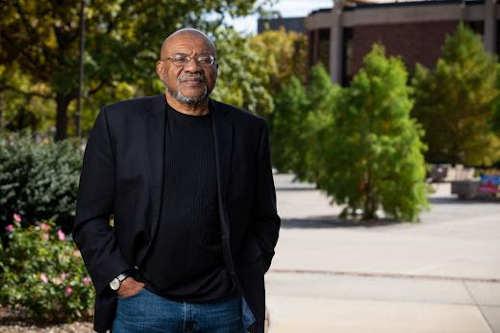‘BEAST’ RATED R
Animals gone wild is nothing new in the movies. Stephen King’s “Cujo” involved a rabid St. Bernard conducting a reign of terror on a small American town, and the same could be said of the shark in “Jaws.”
The aptly-titled “Beast” is a suspenseful action tale about a father and his two teenage daughters who find themselves hunted by a massive rogue lion intent on proving that the savannah has but one apex predator.
Idris Elba’s Dr. Nate Samuels, a recently widowed husband returns to South Africa, where he first met his wife, on a trip with his daughters to honor the memory of their mother’s heritage.
The trip is meant to heal the father’s rift with his offspring who resent the fact that the parents had been separated while the mother was dying of cancer and the good doctor was unable to save her.
Nate obviously loves his daughters with all his heart, but the girls, 18-year-old Mare (Iyana Halley) and 13-year-old Norah (Leah Jeffries), must learn to trust him again after so much disappointment.
Landing by small plane in the middle of nowhere, the family is met by old friend Martin Battles (Sharlto Copley), manager of a game reserve and wildlife biologist, as well as a fierce foe of poachers who wantonly kill protected animals for financial gain.
With Martin as a guide, Nate and his daughters venture into the savannah, and their first encounter is with a pride of lions who are almost domesticated as they have been protected by Martin’s humane crew.
The beast in question, whose own pride of lions has been wiped out by vicious poachers, has decided to declare war on all humans regardless of their intentions.
The beast’s killing instinct is soon revealed when Martin, Nate and the girls discover to their horror that the habitants of a remote desert village have been wiped out.
Shortly thereafter, they become the prey of the monstrous lion, finding themselves stranded in Martin’s jeep after it takes a beating from the animal’s overpowering desire for revenge against mankind.
Just like in most horror films, poor decisions are often made by the characters that make you want to yell about their stupidity. Such is the case when one of the girls ignores the father’s entreaty to not leave the vehicle.
If dumb choices are avoided, then perhaps we’d be missing out on some of the excitements derived from the unimaginable dangers posed by an alpha lion hell-bent on killing humans.
A good reason as any to see the pulse-pounding thriller “Beast” is that it stars superbly talented, versatile British actor Idris Elba, who should be the next James Bond even though he has apparently stated no interest in the role.
Running at a brisk 93-minutes, “Beast” has many moments of intensity and great thrills which makes for nice escapist fare, even if some of the scares can be seen coming from a mile away.
Even if predictable, this B-movie thriller proves to be effective.
THE MAHOGANY BRAND ARRIVES ON HALLMARK CHANNEL
The Hallmark brand is not just the popular and widely recognized line of greeting cards. Through Crown Media, the Hallmark Channel is family-oriented cable programming with a mix of series and original made-for-TV movies.
During an in-person event for this summer’s press tour, Hallmark launched what Wonya Lucas, President and CEO of Hallmark Media, called “a new programming initiative rooted in the spirit and sensibility of the iconic Hallmark Card line.”
That distinctive card line is the Hallmark Mahogany brand, consisting of greeting cards that have honored and celebrated Black culture with empowering themes for more than three decades.
The initiation of Mahogany programming in late August brings original movie “Unthinkably Good Things” to Hallmark’s Movies & Mysteries, a seminal moment in the evolution of Hallmark content with authentic stories through the unique lens of Black women.
At a crossroads in her career and love life, Karen Pittman’s Allison is in need of the love and support of her two friends Melina (Joyful Drake) and Reesa (Erica Ash) in “Unthinkably Good Things.”
When the friends visit Allison in Tuscany, the reunion causes each woman to reexamine the state of her own life and relationships. While they have different personalities and perspectives, they know each other’s truths and help to make life-changing decisions.
Between the good wine, delicious food, a healthy serving of romance, set against the beautiful backdrop of Tuscany, the three women relish the importance of friendship and inspire each other to take the leap to pursue the life and loves they have always wanted.
Watching “Unthinkably Good Things” may do more than pull at one’s heartstrings. The beauty of the Italian countryside is the siren call that will have you looking at travel guides.
During the press conference, Karen Pittman said being in this movie was about the countryside and “the pastoral sense of wine and culture, and I thought it really added a lot to the story, right?” Yes, she’s exactly correct.
Tim Riley writes film and television reviews for Lake County News.

 How to resolve AdBlock issue?
How to resolve AdBlock issue? 





